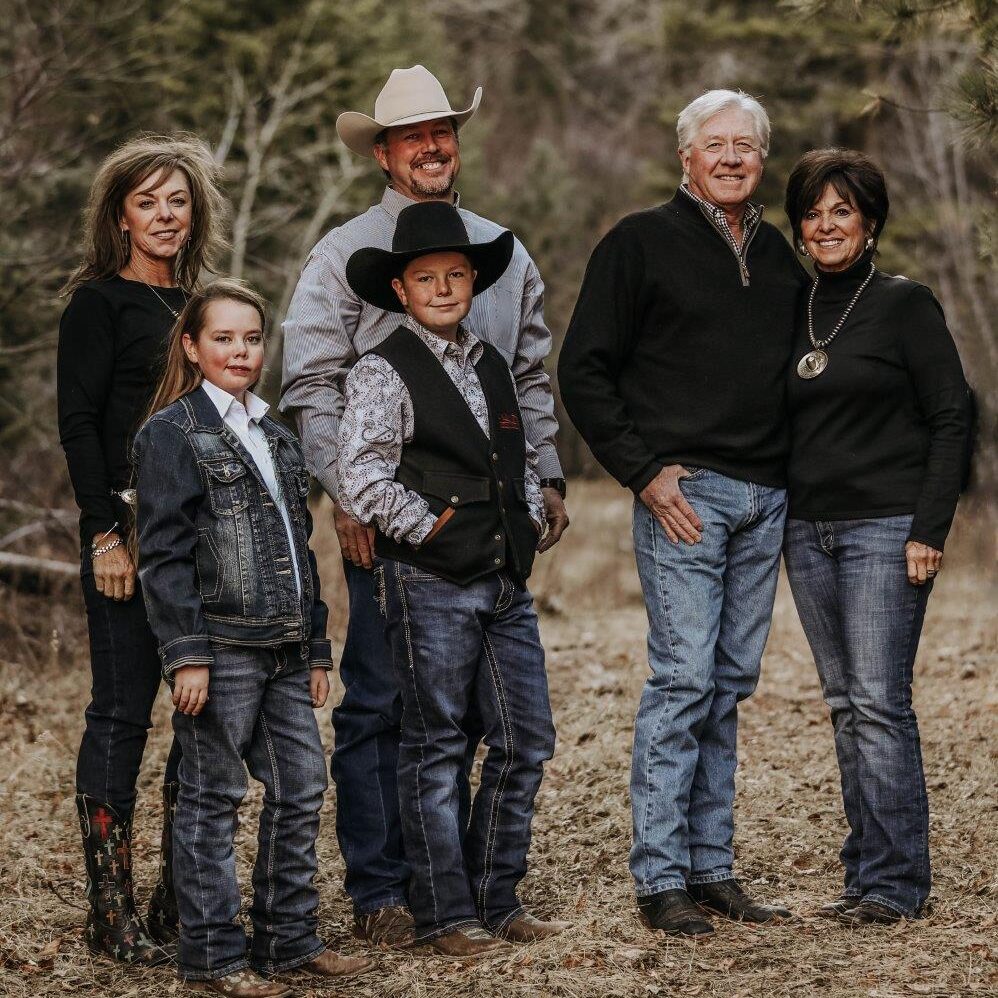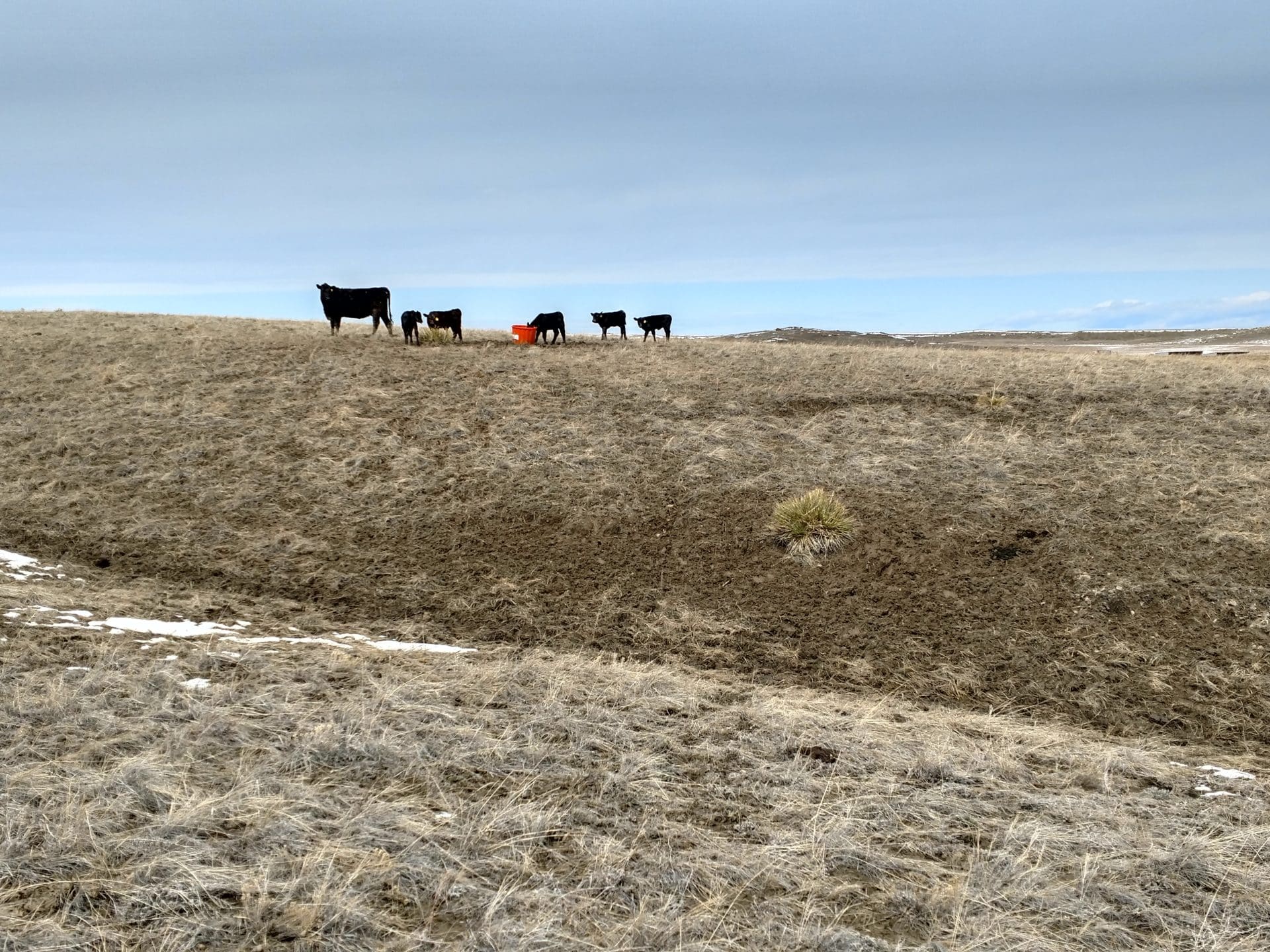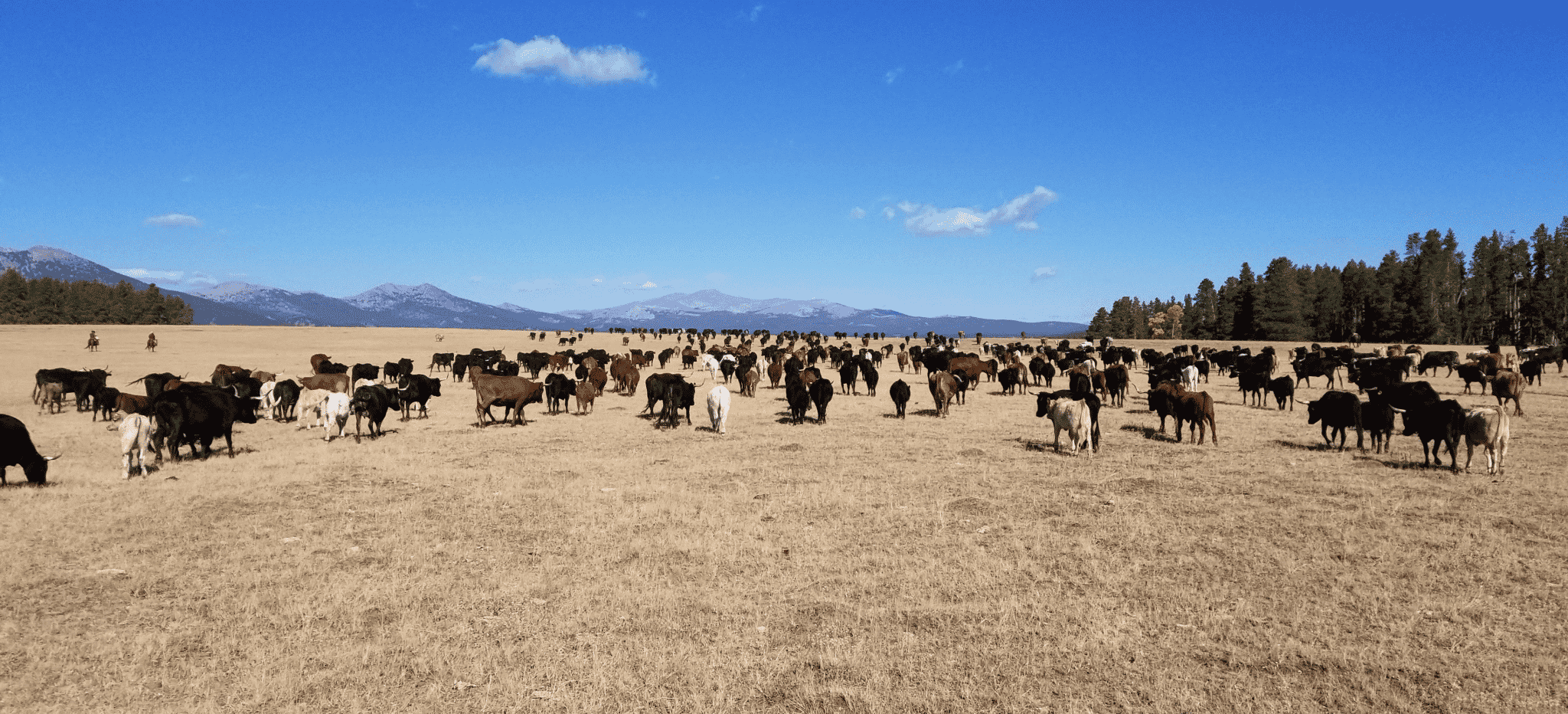Last updated on September 12th, 2022 at 12:06 pm
Corrientes Keep the Purdy Ranch Running
Sometimes, you have to think small to think big
Meet Jim Purdy

Buffalo, Wyoming
It’s been said that tough times don’t last but tough people do. So what about wild, uncertain, and just plain crazy times?
In times like these, it’s the people willing to embrace change and think about ranching in non-traditional ways who will survive. Are they wild and crazy? Not likely. What is likely is that history will look back at this era in the beef business and frame people like Jim Purdy and JR Crozier as forward thinkers willing to take a risk and change to meet a new and shifting dynamic.
So, in 2020, Jim looked to JR for something different and they decided Corrientes…yes, Corrientes, the multi-colored cattle that team ropers love.
Jim owns Purdy Ranch, which encompasses around 20,000 deeded acres along with around 5,000 acres of state and federal grazing at the base of the Bighorn Mountains, permits headquartered near Buffalo, WY. JR is the ranch manager. Jim was born on the ranch that his great uncle on his mom’s side started in the 1880s.
Changing with the Times
According to Jim, the ranch had traditionally run around 400 Angus cows bred to Hereford bulls. But the country is rocky and rough and cold in the winter and the cows never seemed satisfied, even eating a ton to a ton-and-a-half of hay per cow per season, along with protein cubes.
So he looked for something different and decided Corrientes were the answer. “The terrain and the topography, it kind of necessitated a change to the Corriente cattle. They’re four-wheel drive cows. They’ll go anywhere.” Jim says. “Some of the other cattle didn’t find roaming large, rough pastures quite as much fun.”
They aren’t raising roping steers, however. When they sold the Angus cows, they kept the Hereford bulls and now are producing half-bloods. Ultimately, their goal is to develop their own line of branded beef. “That’s our target, but we’re a year or two away from getting there, I think,” JR surmises.
In the meantime, “We’re thinking we’re going to keep the biggest end of those calves right here and go on grass with them,” JR says. “We don’t have all of those parts worked out yet…but we’re trying to stay as natural as we can.”
However, producing grass-fed cattle from pasture to plate will change their grazing scheme, he says. “The optimum would be to keep them on grass they are born and raised on and grow them on the range. That’s going to take a lot of pasture.” Although they would prefer to keep everything inside their fences, “we might have to work something out with a feedlot or a place to feed them.”

Forward Thinking
While forward thinking is the hallmark of Purdy Ranch, in many ways it’s a traditional western operation. The ranch is split in two, with the home place on the bottom end at about 5,000 feet. Summer pasture in the Bighorns is about 7,500 to 8,000 feet. As the crow flies, the two are about 4 miles apart. On the ground over rough country, it’s closer to 15.
Traditionally, they would trail the cattle on horseback to summer range the end of June and trail them home again, usually around the middle of October. The past few years, however, they started trucking the pairs to summer pasture.
“In the past, when we had the beef cows, we would wean them on the mountain and would ship from right there,” Jim says. Now, with the Corriente halfbloods, they sort the calves off the cows on the mountain and truck them to hay meadows at the home place for weaning. The cows stay uphill for another 30 to 45 days, then are trailed home.
Conception Rates + Weaning Weights
Then there's the breed up. JR recalls back to 2018 when they developed angus heifers - that was the first year they started on the Rio tubs. When they preg checked the heifers that year, the conception rate was 92% - not to mention it happened in a 45-day breeding window. What's more, 80% of those heifers were AI bred. When JR shared the results with their vet, Dr. Jay Hudson, he couldn't believe it. Number one, most of them were AI bred, and number two, those results in a 45-day window on yearling heifers is just phenomenal.
Even through the off and on drought over the past few years, their cow conception rates have consistently been 92-93% in a 45-46 day breeding window.
In 2021, the first year they had the Hereford-Corriente cross calves, JR estimates the calves weaned around 350 to 400 pounds on September 20. Keep in mind, however, that Corriente cows aren’t very big. “That’s half the weight of the cow,” Jim says.
In an effort to ranch in synch with nature, they’ll move their calving period, which traditionally began April 15, to May 1st in 2023.
Forward thinking doesn’t just apply to the type of cattle they raise. It also applies to their mineral program.
In the cold and snow of a Wyoming winter, the beef cows always lost condition, even eating a lot of hay. “We started doing some research, found Riomax, talked to some folks,” Jim recalls. “We made a decision to try it.”
Making a Difference
They bought a semi-load of the orange tubs in 2018 and put them in front of their Angus cows. “And in about 10 days, we could start to see a difference in the cows,” JR says. They cut feed consumption by around 10 pounds a day “and our cows put on condition and they were actually satisfied.” This in January and February.
What’s more, they discovered they didn’t need to feed the protein cubes any longer. “We had 400 Angus cows and we paid for the tub plus saved $5,000 a month in feed costs. And we did that for four months in a row,” he says.

Typical consumption per day of Riomax is around ¼ pound. The Corrientes are consuming half that, JR says. Between a smaller animal and the Riomax, “We wintered those cows on a third of a ton of hay last winter (2021) versus feeding a ton and a half normally (to the larger beef cows) on the same footprint of country,” JR says. And with smaller cattle, they’re able to run more animals in a pasture.
Summer grazing is another place where they’ve seen the benefits of Riomax. “We left probably half in the pastures on the mountain (in 2022) where traditionally, in the past, I don’t think we did.”
In addition to adding Riomax to their management, they tried Rhyzogreen the summer of 2022 on their hay ground. “Coming out of a tough year and another so-so year, we had about a 15-18% increase on tonnage,” JR says.
The Tried and True
Purdy Ranch now keeps Riomax tubs out year around. “We know it works, we’ve seen the results and benefit of it,” JR says. “It helps us utilize the forage, number one, but the other cost-benefits—cow retention, the bulls testing good, health on the calves. We found it to be very beneficial to our operation.”
Jim agrees. “Looking at the bottom line and trying to make it better, we’ve made a lot of changes. The one change we did not make was our mineral program. Because we believe in Riomax.”



